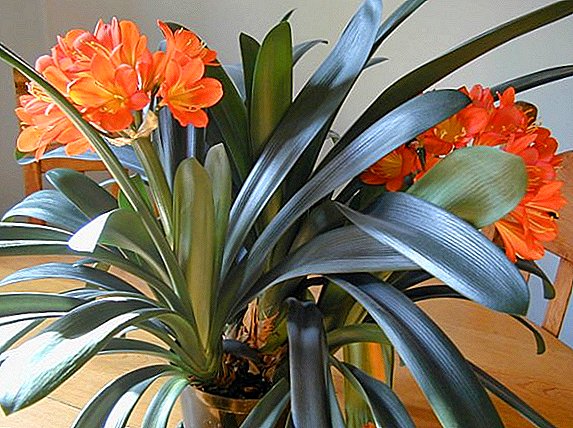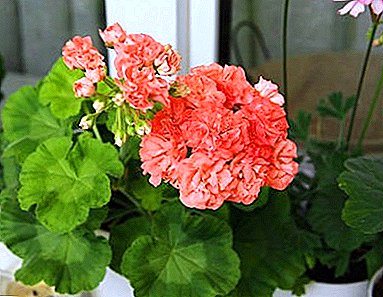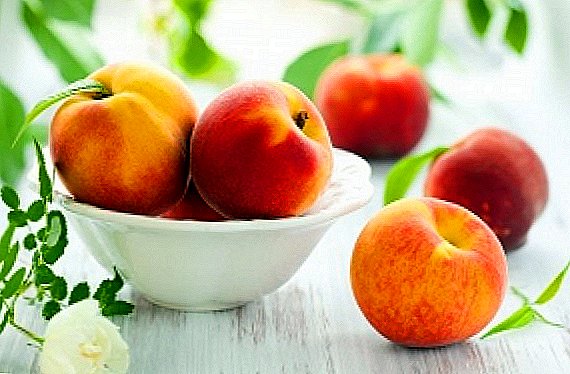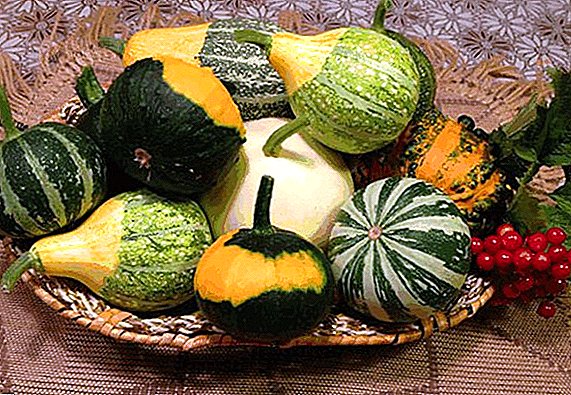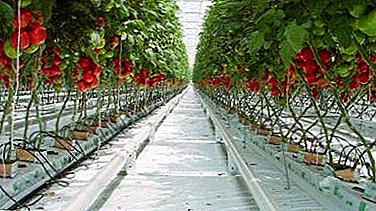
Gardeners know that the crop of tomatoes in the greenhouse can be harvested much more and more qualitatively than in the open field. Therefore, as soon as the seedlings gain strength, and the soil in the greenhouse warms up sufficiently, the summer residents rush to plant the plants for a permanent place.
So that efforts are not in vain, it is important to know the rules for planting tomatoes in the greenhouse. Let us tell you exactly at what distance from each other it is necessary to plant bushes of tomatoes, what distinguishes planting patterns.
Why is it important?
Very often, gardeners save space in their garden plot, compacting planting. Tomatoes are vegetable crops that cannot tolerate the slightest thickening. Too high, thickened, planting density will deprive the plants of sufficient access of air and light.
What determines the distance between the bushes?
The planting distance of a tomato depends on the variety and type of plant and the type of greenhouse in which it is planned to plant the seedlings.
At what interval from each other should be planted?
 Planting tomatoes in the greenhouse is associated with a limited area and space saving. With a close planting plants are sick, they do not have enough light, reduced yields from the bush.
Planting tomatoes in the greenhouse is associated with a limited area and space saving. With a close planting plants are sick, they do not have enough light, reduced yields from the bush.
Planting a tomato at too large a distance from each other is also not rational - the excess area in the greenhouse is used.
To select the optimal planting scheme for a tomato, you need to know what sort and type of seedlings we plant in the greenhouse ground. All information on a grade of tomatoes is specified on packing of seeds.
Important. According to the general norms of planting a tomato in a greenhouse, 2 stalks form undersized and early ripening varieties, the distance between bushes is kept 35-40 cm, between rows 50-60 cm.
For tomatoes, formed in one stem, the occupied space is less: the distance between the bushes is 25-30-30 cm, the row spacing is 45-50 cm. For tall 60-70 between plants, with row spacing of 75-80 cm.
Schemes for different varieties of tomatoes
Tomatoes vary in height and ripening. According to the growing season, tomato varieties are of early, medium and late ripening. The height of the tomatoes are divided into: tall (indeterminantnye), sredneroslye (determinant) and undersized.
Indeterminate
Indeterminate or tall varieties grow throughout the growing season, have no restrictions in growth. Plant height can reach 3 m. Brush with ovaries will be infinitely formed every 2-3 leaves, as the plant grows.
Tomatoes of indeterminate varieties are capricious, they require more thorough care: in the process of growth they must be timely pinned, pinned and tied to supports.
Varieties by type of fruit vary: juicy and fleshy, pink and red. The most common in the conditions of the middle band: "Russian Happiness", "Sprut", "Bull's Heart".
Standard planting patterns for indeterminate varieties:
- Staggered in 2 rows. The distance between plants is 60 cm, between rows -70-80 cm.
- Parallel, in 2 lines. The distance between plants is 60 - 70 cm, the ribbons themselves are placed 90-100 cm apart.
If the greenhouse is wide and the area allows you to make one ridge in the middle, then on such a bed you can place the plants in chessboard order in 3 rows.
Determinant (medium)
 The term determinant means "having a limited height". Growth restriction in a tomato of such varieties ends in a flower brush, after which the shoot ceases to grow.
The term determinant means "having a limited height". Growth restriction in a tomato of such varieties ends in a flower brush, after which the shoot ceases to grow.
Further growth of the plant will occur from the most developed stepson, who grew out of the leaf bosom. Between the ovaries of these varieties are always less than 3 leaves.
Forming fruit brushes in the amount of 5-8 pieces, the plants completely stop growing. The remaining forces are spent only on the formation and maturation of the crop.
The plant height of the determinant group of tomatoes ranges from 60 cm to 1 meter, depending on the variety and region of cultivation.
By the end of 2017, the most popular varieties were recognized: “Turbojet”, “Honey Savior”, “Midas”.
In the group of determinant varieties, there are: superdeterminant and semi-determinant. Semi-determinant varieties occupy a middle niche between indeterminant and determinant varieties. The superdeterminant group of tomatoes includes varieties and hybrids, specially bred, for obtaining an early tomato harvest in spring. They are characterized by a friendly and abundant yield of the crop, after which a new ovary is not formed.
Undersized, standard
Plant height, depending on the variety or hybrid, ranges from 60-80 cm. Fruits are small, weighing 100-120 g. Popular varieties are Ob domes, Sanka. Separately, a group of cherry tomatoes, “Ladybird”, “Somme”, distinguished by early ripening. Standard forms of tomato are also undersized.
Plant growth is up to 40 cm. They have an upright stalk and do not lie in the process of fruit loading. Chunky seedlings quickly take root and makes compacted planting, which has earned a special love from summer people.
Planting scheme for stunted and standard tomatoes - in rows, two-rowwhen wide aisles of 40-60 cm alternate with narrower - 30 cm.
Different planting schemes for tomatoes in the greenhouse. According to agrotechnical standards, 0.3 m is required for tomato plants for normal growth and development.2 useful area under each bush. In order not to engage in mathematical calculations independently, agronomists have developed certain standards for the schemes.
How often to plant with compacted placement?
 This is a combined method of planting tomato seedlings of various varieties. Low-grade seedlings are placed near the greenhouse walls., between plants maintain a distance of 30-40 cm
This is a combined method of planting tomato seedlings of various varieties. Low-grade seedlings are placed near the greenhouse walls., between plants maintain a distance of 30-40 cm
At the main aisle, 1 row of tall late-ripening tomatoes is placed at a distance of 50-60 cm between the bushes.
The main passage is arranged in a width of 80-100 cmand the aisles for low grades are about 50-60 cm.
In the intervals between indeterminate varieties, sometimes one shrub of standard or dwarf tomatoes is planted.
Rows
The most popular scheme for gardeners. Planting seedlings produced by pre-made markup. According to this technology, stem and determinant varieties are planted. Depending on the growth of plants, the distance between bushes in the range from 25 to 40 cm, the width between the rows is 50-80 cm. Such planting is beneficial only for industrial greenhouses, where the area allows such scale plantings.
Parallel
Another name - belt landing. The main difference from ordinary planting is that between the passages they plant not one, but two rows of plants. Convenience of maintenance remains, and the area of the greenhouse is used more economically. The distance between plants -60 - 70 cm; row spacing - 25-50 cm.
Attention. Belt planting is suitable for all groups of varieties of tomatoes.
Chess order
Suitable for low-growing varieties of tomatoes. The beds in the greenhouse are laid out with lines, the seedlings are planted in a checkerboard pattern. The distance between the plants is 50 cm.
After landing the first line, mark the holes in the second. Each well should be clearly in the middle with respect to the first row plants. Srednerosly tomatoes are planted according to this scheme, maintaining a greater distance between the bushes for better ventilation.
Square nesting method
Seedlings are planted in the corners of an imaginary square, in the center of which is built irrigation pit. As a result, there are 4 bushes per hole. The distance between the plants is 50-60 cm, and the depth of the pit is 40 cm. Such a pit holds up to 20 liters of water for single irrigation. This method is suitable for medium-sized, determinant and shtambovyh varieties and hybrids. Every gardener, wanting to get a good crop of tomatoes, should know their varietal differences and existing planting schemes.
This is especially important in greenhouse conditions, where there is no natural air circulation, high humidity creates conditions for the development of fungal diseases. Compliance with the secrets of growing varieties and individual planting schemes helps to deprive yourself of care problems and increase crop yields.


